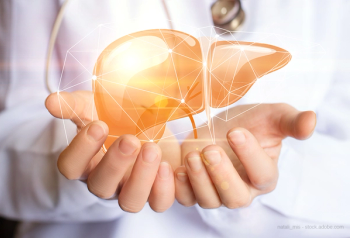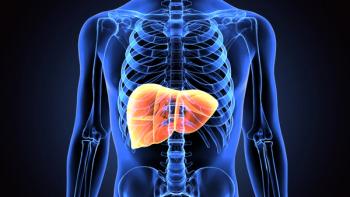
Gene Therapy Among the New Possible Treatments for Wilson’s Disease, a Rare Liver Disease
Two gene therapy trials using adeno-associated viral vectors are underway. A review paper published recently in the New England Journal of Medicine says lifelong treatment with chelators is effective but adherence is a problem.
Wilson’s disease is a rare disease that results in copper accumulating in hepatocytes, the cells that make up 80% of the liver. According to review paper recently published in the New England Journal of Medicine it occurs worldwide and has an estimated prevalence of about 30 cases per 1 million population, which works out to mean that just under 10,000 people in the United States have Wilson’s disease.
Mutations of the ATP7B gene are associated with Wilson’s disease. The review paper’s author, Eve A. Roberts, M.D., Ph.D., of the Hospital for Sick Children in Toronto, and Michael L. Schilsky, M.D., of the Yale School of Medicine explain that the gene product of the gene is a multifunctional, intracellular P1-type ATPase enzyme that expedites copper excretion through the bile duct when intracellular copper levels are high. It also metabolizes copper in other ways that keep it from piling up in hepatocytes. In Wilson’s disease, once there is copper-induced injury to the liver, other parts of the body can be affected, including the central nervous system. The first notable symptoms of Wilson’s disease may be related to liver disease but patients also may also present with neurological disorders and psychiatric illnesses, according to Roberts and Schilsky.
Although diagnosis of Wilson’s is complicated, one important clue is the level of ceruloplasmin in the blood. Ceruloplasmin is a protein made in the liver that binds to copper and ferries it around the body. Roberts and Schilsky say that a low ceruloplasmin level alone is not adequate to make a Wilson’s disease diagnosis but a very low one (less than 5 mg per deciliter) is “strongly suggestive” of Wilson’s disease.
Oral chelators revolutionized the treatment of Wilson’s disease, say Roberts and Schilsky, and penicillamine (provided as D-penicillamine) and trientine (dihydrochloride) remain the main treatments. They also mention zinc salts: “Extensive European experience indicates that zinc can serve primary therapy; however, it may not always be effective for hepatic Wilson’s disease in the long term.” They note that “neurologic worsening” may occur with any of these drugs — especially penicillamine — so the starting doses should be low.
Once there is a diagnosis, people with Wilson’s disease should be on lifelong treatment, according to Roberts and Schilsky. But that also makes for problems with adherence, which they characterize as a “major challenge for patients, who must take, at a minimum, twice-daily medication for the rest of their lives or risk severe clinical deterioration.”
The review by Roberts and Schilsky also includes a discussion of emerging treatments
New chelators
Tetrathiomolybdate is copper-specific chelator with a high affinity for copper, but its development has been discontinued. Methanobactin, a peptide produced by the bacterium Methylosinus trichosporium OB3b, binds to copper. Animal experiments have produced promising results and the lessening of hepatic mitochondrial injury.
Restoring ATP7B function
Repurposed older therapies and an experimental new one aim to restore or improve ATP7B transport function, say Roberts and Schilsky. Inhibitors of stress kinases p38 and JNK are currently in development with the goal of restoring the intracellular trafficking of mutated ATP7B.
Lessening the effects of copper
Therapy that targets cellular pathways involved in the response to copper injury is another strategy that is under investigation, say Roberts and Schilsky. They pointed to a result that showed zinc reversing copper-induced effects in mice.
Gene therapy and repair
Using viral vectors that target the liver, such as lentiviruses, makes sense, but Roberts and Schilsky note that the experience with lentiviral gene delivery is limited. Using adeno-associated viruses was problematic because of limitations on the size of the DNA, but Roberts and Schilsky say that hurdle has been cleared by smaller yet functional ATP7B constructs. Two early-phase studies using adeno-associated virus vectors for Wilson’s disease are underway, they say.
Gene repair, as opposed gene replacement, is another possibility discussed by Roberts and Schilsky. The CRISPR-Cas gene editing technology might be used to correct harmful ATP7B mutations, they say, although they also mentioned that the large number of pathogenic mutations “makes it potentially costly to establish the technique for patients who have uncommon mutations.” Newer technologies, they say, may allow for substitution of large segments of DNA that contain multiple mutations.
Newsletter
Get the latest industry news, event updates, and more from Managed healthcare Executive.






















































